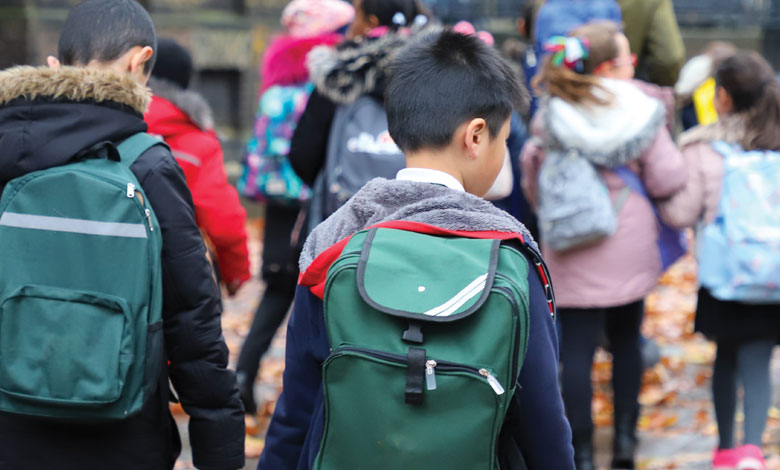Decarbonising school transport

Challenges remain in decarbonising the school transport sector as there has been little change in average mode of transport utilised by school pupils in the last decade.
Under the Climate Change Act, Northern Ireland is required to achieve net zero carbon dioxide emissions by 2050, with figures released in June 2024 by the Department of Agriculture, Environment and Rural Affairs showing that CO2 emissions from the transport sector marginally increased in 2022 compared to 2021, and have increased by 7 per cent since 1990.
The Department of Education’s Climate Action Plan commits to a sectoral decarbonisation target of 29 per cent by 2030.
Despite these challenges, statistics released by the Northern Ireland Statistics and Research Agency (NISRA) show that, in the 2022/23 academic year, 62 per cent of primary school age children (aged between four and 11) were driven to and from school via car while 30 per cent walked to and from school. 7 per cent of primary school age children travelled to and from school via bus and 1 per cent cycled.
Among post-primary school pupils, mostly aged between 11 and 18, 42 per cent travelled to and from school by bus as their main mode of travel, while 36 per cent travelled to and from school by car. A further 21 per cent of pupils walked to and from school, while 2 per cent travelled by train.
Of the primary school age children who walked to school, 95 per cent walked all of the way to and from school. 39 per cent spent 10 minutes or less walking to and from school and 39 per cent spent between 11 and 20 minutes.
81 per cent of post-primary school pupils walked all of the way to and/or from school in the 2022/23 academic year, lower than the proportion who walked all of the way to school in 2021/22 (89 per cent). 31 per cent of post-primary school pupils spent 10 minutes or less walking to and from school, 39 per cent spent between 11 and 20 minutes, and 14 per cent spent between 21 and 30 minutes.
“The Department of Education’s Climate Action Plan commits to a sectoral decarbonisation target of 29 per cent by 2030.”
Accessibility to active travel/public transport options
In 2022/23, a higher proportion of primary school pupils living in rural areas (80 per cent) travelled to/from school by car than those living in urban areas (59 per cent). Similarly, a higher proportion of those living in rural areas (11 per cent) took the bus to/from school, compared to urban areas (6 per cent). Those living in urban areas (40 per cent) were more likely to walk than those living in rural areas (17 per cent).
In 2022/2023, there were 794 primary schools and 192 post-primary schools in Northern Ireland, meaning that walking is a more prominent option for children of primary school age. NISRA asserts that it is “likely that children will live closer to primary schools than post-primary schools and these results are not unexpected”. Furthermore, older children, the statistics suggest, are more likely to travel further to attend a post-primary school of their choice.
Of primary school pupils, 49 per cent lived one mile or less from their school, 33 per cent lived between two and three miles and 19 per cent lived four or more miles from their school.
Of post primary school pupils, 51 per cent lived 4 or more miles away from their school, 28 per cent lived between two and three miles away from their school and 22 per cent lived between one mile or less away from home. Of these pupils, 64 per cent travelled by bus and 29 per cent were driven by car.
The statistics show that post-primary school pupils living in urban areas (31 per cent) were more likely to walk to/from school than those living in rural areas (6 per cent). Those living in rural areas (64 per cent) were more likely to take the bus than those living in urban areas (40 per cent).
The Department of Education has stated its commitment to decarbonisation. No formal action plans are in place to reduce carbon output from the transport sector overall in spite of the passage of the Climate Change (Northern Ireland) Act 2022, meaning that there remains work to be done for decision-makers in enabling the transport sector to contribute to Northern Ireland’s emissions reductions targets.




